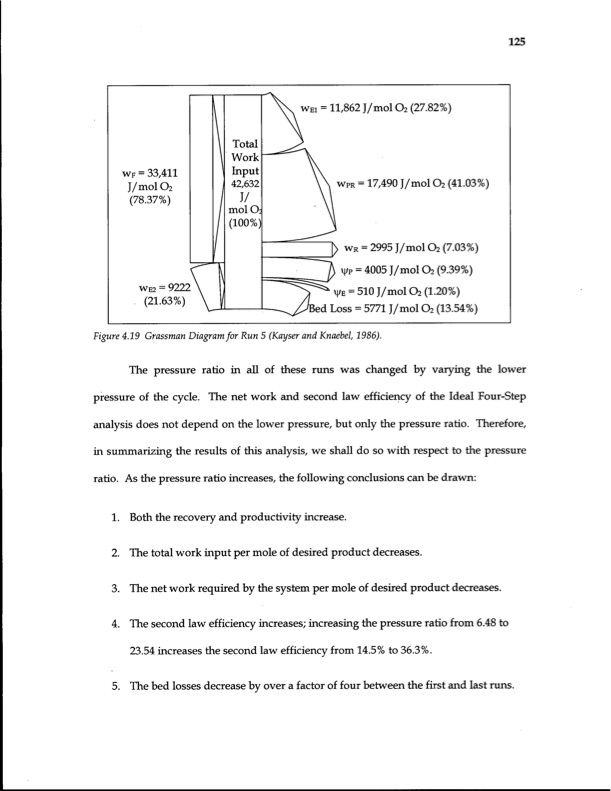
PDF Publication Title:
Text from PDF Page: 141
wF =33,411 J/mol 0 2 (78.37%) WE2 = 9222 . (21.63%) WEI = 11,862 J/mol O2 (27.82%) WPR= 17,490 J/mol 0 2 (41.03%) ]>wR =2995J/mol02 (7.03%) VJ/P= 4005 J/mol O2 (9.39%) \|/B= 510 J/mol O2 (1.20%) ed Loss = 5771 J/mol O2 (13.54%) Figure 4.19 Grassman Diagram for Run 5 (Kayser and Knaebel, 1986). The pressure ratio in all of these runs was changed by varying the lower pressure of the cycle. The net work and second law efficiency of the Ideal Four-Step analysis does not depend on the lower pressure, but only the pressure ratio. Therefore, in summarizing the results of this analysis, we shall do so with respect to the pressure ratio. As the pressure ratio increases, the following conclusions can be drawn: 1. Both the recovery and productivity increase. 2. The total work input per mole of desired product decreases. 3. The net work required by the system per mole of desired product decreases. 4. The second law efficiency increases; increasing the pressure ratio from 6.48 to 23.54 increases the second law efficiency from 14.5% to 36.3%. 5. The bed losses decrease by over a factor of four between the first and last runs. 125PDF Image | Energy Efficiency of Gas Separation Pressure Swing Adsorption

PDF Search Title:
Energy Efficiency of Gas Separation Pressure Swing AdsorptionOriginal File Name Searched:
ubc_1997-0009.pdfDIY PDF Search: Google It | Yahoo | Bing
CO2 Organic Rankine Cycle Experimenter Platform The supercritical CO2 phase change system is both a heat pump and organic rankine cycle which can be used for those purposes and as a supercritical extractor for advanced subcritical and supercritical extraction technology. Uses include producing nanoparticles, precious metal CO2 extraction, lithium battery recycling, and other applications... More Info
Heat Pumps CO2 ORC Heat Pump System Platform More Info
| CONTACT TEL: 608-238-6001 Email: greg@infinityturbine.com | RSS | AMP |